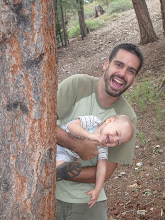Anyone who has been a part of the public education system during the last ten years has heard of the term Collaborative Learning. Learning while working together, it makes sense and it works in the classroom, but I have simply taken it for granted, and Trimbur has given some insight into why it works.
Pedro Beade, through Trimbar, "worries that consensus might be used to justfiy the practices of 'a crazy, totalitarian state'" (462). Others see consensus "stifl[ing] individual voice and creativity". But I think quite the opposite. In a teacher led classroom, where the teacher does 100% of the teaching and the students do 100% of the learning, the teacher imparts his/her expertise onto the students and again to quote Trimbar using "intellectual hoarding". This sounds more like a crazy totalitarian state. Of course, the teacher offers knowledge as reading, life experiences, and training has enabled them to do so, but the idea of learning collaboratively, where the teacher is part of the same learning community, is brilliant. I have been the authority, but I also relish the opportunity when through discussion, a student brings forth a prediction I never thought of, or an interpretation that never crossed my mind. This happens even more often between students, and is a beautiful experience.
Trimbar's whole essay depends wholy on the redefinition of consensus, "a strategy that structures differences by organizing them in relation to each other" (468). This means that consensus isn't everybody agreeing, or even everybody agreeing to disagree (468), its everybody agreeing that each group member comes with different life experiences and different talents to offer to the whole. Students can assimilate learning and work together to a common goal, learning more and accepting differing opinions for what they are, intelligent viewpoints that each learning hasn't thought of yet. It "enables individuals to participate actively and meaningfully in group life" (463).
Now, Trimbar refers to utopia quite a bit toward the end of the essay, and my description of collaborative learning sounds every bit the part, but utopia rarely occurs in the real world classroom. Modeling, teaching, practicing, redirecting, encouraging, students to work collaboratively must occur at all levels of education and even teachers need to learn how to effectively collaborate with their students. It's definitely not easy, but nothing meaningful and worth it ever is.
Subscribe to:
Post Comments (Atom)

3 comments:
Trimbur paints a distinction between collaborative learning and the type of classroom that gives 100% of the authority and power to the teacher. But what of the autonomy of the student advocated by process and expressivist theories. Trimbur seems to group Current Traditional, Process, and Expressivist theories into one.
Collaborative learning can be a great way to work, but is it the most effective way to teach writing?
I love the "intellectual hoarding" concept. It does not appear to be much different from the sometimes pompous attitude in some universities with some professors. Combining many strategies with what works for students and teachers seems to be the way. Because life and composition theory is fluid, how do all the participants maintain a passion for learning and writing? Sharing ideas through the written word is one way I think.
Post a Comment